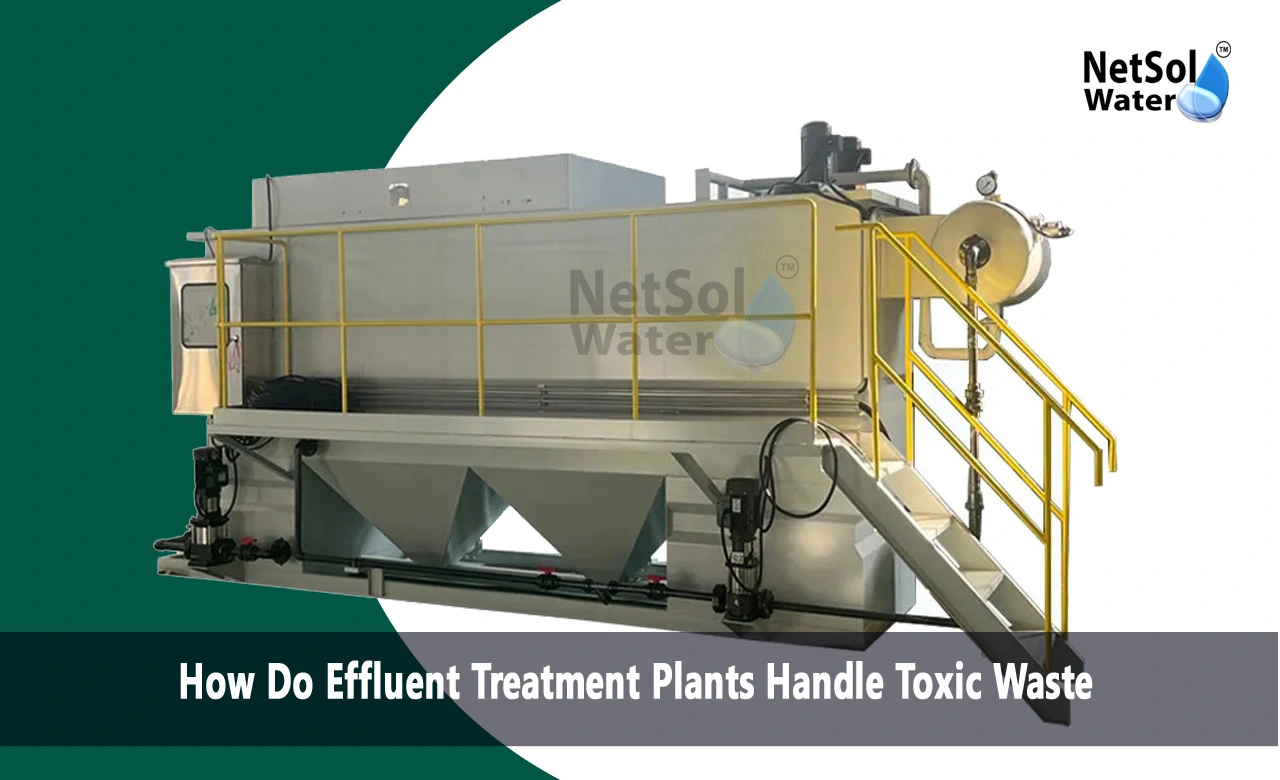How Do ETP Plants Handle Toxic Waste?
Factories pump forth quantities of wastewater filled with harmful chemicals. Effluent treatment plants step up to fix this hazardous waste before it pollutes our world. Let's look into how these institutions deal hazardous waste.
Understanding Toxic Waste
Toxic waste harms living things and trashes the environment. Big enterprises like chemical plants, pharmaceuticals makers and miners pump out this deadly waste as they work.
Common Types of Toxic Waste
· Heavy metals (lead, mercury, cadmium)
· Organic substances (pesticides, solvents)
· Radioactive materials
· Acids and bases
· Persistent organic pollutants (POPs)
Environmental and Health Impacts
Toxic waste wreaks harm when left untreated:
1. It poisons water
2. It damages soil
3. It fouls the air
4. It sickens people and animals
5. It wrecks up ecosystems
The Role of Effluent Treatment Plants
Effluent treatment plants (ETPs) take away pollutants from wastewater. They clean up industrial muck to meet safety regulations for disposal.
Key Objectives of ETPs
1. They knock out dangerous stuff
2. They reduce down on environmental impact
3. They follow the law
4. They keep people healthy
5. They make water reusable
Treatment Processes for Toxic Waste
ETPs utilize physical, chemical, and biological methods to clean it up.
Primary Treatment
Primary treatment takes out huge chunks and cuts down on overall filth.
Screening
· Job: Catch huge rubbish and solid objects
· Tools:
· Bar screens
· Rotary screens
· Mesh filters
Sedimentation
· Job: Split solids from liquids
· How it works:
· Dirty water creeps through big tanks so parts can sink
· Gear: Clarifiers or settling tanks
Secondary Treatment
Secondary treatment targets dissolved and small organic debris utilizing bugs.
Activated Sludge Process
· Job: Eat up organic contaminants with microbes
· Steps:
1. Mix dirty water with bacteria goo in air tanks
2. Bugs chew on organic matter
3. Separate and reuse some of the sludge
Trickling Filters
· Job: Clean water with a set layer of microorganisms
· Parts:
· Bed of rocks or plastic things
· Spinning water sprayer
· How it works: Water trickles across the bed, bugs consume the filth
Tertiary Treatment
Tertiary treatment offers extra strength to fight certain pests and make water cleaner.
Advanced Oxidation Processes (AOPs)
· Job: Destroy difficult organic substances and bacteria
· Methods:
· UV/Ozone zapping
· Fenton's reagent
· Photocatalysis
Membrane Filtration
· Job: Catch dissolved solids and microscopic organisms
· Types:
· Microfiltration
· Ultrafiltration
· Nanofiltration
· Reverse osmosis
Specialized Treatment for Toxic Waste
ETPs need unique methods to deal with extra-nasty waste.
Heavy Metal Removal
Methods:
· Chemical precipitation
· Ion exchange
· Activated carbon sucking
Treatment of Organic Compounds
Techniques:
· Activated carbon sucking
· Advanced oxidation
· Special bacteria munching
Radioactive Waste Treatment
Approaches:
· Ion exchange resins
· Membrane tricks
· Chemical precipitation
· Safety stuff: Shielding, robot handling, decreasing waste
Emerging Technologies in Toxic Waste Treatment
Nanotechnology
Uses:
· Tiny sponges for metal removal
· Super-thin filters
· Tiny catalysts to break down organic muck
· Perks: More surface area, selective cleaning
Electrochemical Treatment
· Job: Destroy metals and organic molecules
· How: Use electricity to trigger chemical reactions
· Good stuff: Makes less sludge, no need for chemicals
Phytoremediation
· Idea: Use plants to suck up or lock down pollutants
· Where it works: - Manmade wetlands
· Floating plant islands
· Perks: Cheap and green
Challenges in Toxic Waste Treatment
ETPs face some tough nuts to crack:
1. Waste keeps changing
2. Some material just won't break down
3. Takes gobs of electricity
4. Leftover gunk needs handling
5. Tons of rigorous rules to obey
Strategies to Overcome Challenges
· Build flexible cleaning systems
· Invent new cleaning tech
· Cut down on power use
· Find ways to utilize treatment leftovers
· Train staff better and watch operations closely
Best Practices for Effluent Treatment Plants
ETPs should follow these tips:
1. Figure out exactly what's in the waste
2. Make less garbage and segregate it
3. Design cleaners based on the specific muck
4. Keep an eye on things and change as needed
5. Train workers non-stop 6. Keep solid records
7. Plan for emergencies
8. Talk to everyone concerned and obey the rules
Regulatory Framework and Compliance
ETPs need play by the regulations to handle toxic waste safely.
Key Regulations
· Clean Water Act (CWA)
· Resource Conservation and Recovery Act (RCRA)
· Toxic Substances Control Act (TSCA)
Compliance Measures
1. Get all the right papers
2. Check items and report regularly
3. Be super demanding about quality
4. Keep full records of cleaning and dumping
5. Let inspectors poke around now and again
Conclusion
ETPs fight the good fight against hazardous waste to keep our planet clean. They throw a mix of physical, chemicaland biological techniques at filthy industrial wastewater. As technology grows better, we'll see even more interesting solutions to clean up harmful waste.But toxic waste still gives us headaches. We need smarty-pants researchers, innovative gadgets, and coordination between factories, rule-makers, and IT workers to keep making waste treatment better.
To explore customised commercial RO plants, Industrial RO plants, ETP or STP solutions for your needs in your areas and nearby regions, contact Netsol Water at:
Phone: +91-965-060-8473, Email: enquiry@netsolwater.com



